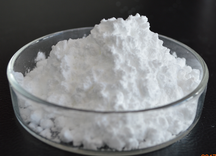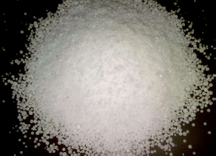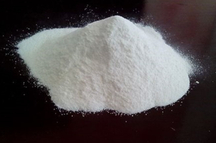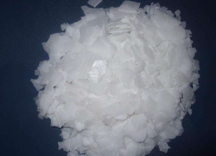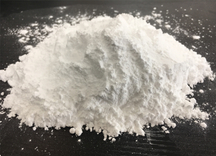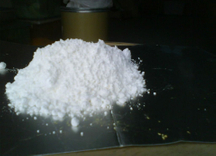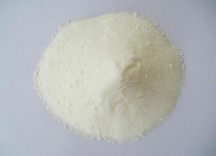
Adipic acid is a crucial ingredient in the production of polyester foam plastics, widely used in various applications such as automotive upholstery, furniture padding, and insulation materials. Selecting the right adipic acid is essential to ensure the desired properties of the final product, including durability, flexibility, and resistance to environmental factors. In this article, we will explore the best practices for choosing adipic acid for polyester foam plastics, focusing on the key factors to consider and the potential impact on the end product.
Understanding the role of adipic acid in polyester foam plastics
Adipic acid plays a vital role in the production of polyester foam plastics, serving as a key monomer in the synthesis of polyesters. It is a dicarboxylic acid, which means it contains two carboxyl functional groups (-COOH) in its molecular structure. When combined with diols, such as ethylene glycol or propylene glycol, adipic acid forms a polyester resin through a condensation reaction. This resin is then processed into foam plastics, which are characterized by their lightweight, flexibility, and excellent insulation properties.
The choice of adipic acid directly affects the properties of the final polyester foam plastic. For instance, the molecular weight of adipic acid can influence the foam’s density, resilience, and resistance to hydrolysis. Additionally, the purity and quality of the adipic acid used can impact the foam’s performance, as impurities can lead to the formation of unwanted by-products during the polyester synthesis process. Therefore, selecting the right adipic acid is crucial to ensure the desired properties and performance of the final product.
Evaluating the quality and purity of adipic acid
When selecting adipic acid for polyester foam plastics, it is essential to evaluate its quality and purity. High-quality adipic acid should have a minimum purity of 99%, which ensures that the foam plastic exhibits consistent and reliable properties. Impurities in adipic acid can lead to the formation of by-products during the polyester synthesis process, resulting in foams with undesirable characteristics, such as poor flexibility, low resilience, and reduced resistance to hydrolysis.
One of the key factors to consider when assessing the purity of adipic acid is its water content. High water content in adipic acid can cause hydrolysis reactions during the polyester synthesis process, leading to the formation of low molecular weight by-products that adversely affect the properties of the foam plastic. Therefore, it is crucial to choose adipic acid with a low water content, typically below 0.1%, to ensure the production of high-quality polyester foam plastics.
In addition to water content, the presence of volatile organic compounds (VOCs) in adipic acid can also impact the quality of the foam plastic. VOCs can be introduced during the manufacturing process or as a result of contamination from storage and handling. To minimize the risk of VOC contamination, it is advisable to choose adipic acid that is packaged in airtight containers and stored in a cool, dry place. Furthermore, conducting regular quality tests, such as gas chromatography, can help ensure that the adipic acid used in the production process meets the required purity standards.
Considering the impact of molecular weight on foam properties
The molecular weight of adipic acid is a critical factor that influences the properties of the resulting polyester foam plastic. Molecular weight is a measure of the size of the molecules in a substance and is determined by the number of atoms and the arrangement of those atoms within the molecule. In the case of adipic acid, its molecular weight is primarily determined by the length of its carbon chain, which consists of six carbon atoms.
A higher molecular weight adipic acid can lead to polyester foam plastics with improved mechanical properties, such as increased tensile strength, elongation at break, and resilience. This is because longer carbon chains result in a higher degree of crosslinking between the polyester molecules, which enhances the foam’s structural integrity. For example, using adipic acid with a molecular weight of around 146 g/mol can result in foam plastics with excellent elasticity and resistance to deformation under stress.
On the other hand, a lower molecular weight adipic acid can result in polyester foam plastics with reduced mechanical properties, such as lower tensile strength and resilience. This is because shorter carbon chains lead to a lower degree of crosslinking and a less stable molecular structure. For instance, using adipic acid with a molecular weight of around 102 g/mol can result in foam plastics that are more prone to deformation and have a shorter lifespan.
When selecting adipic acid for polyester foam plastics, it is essential to consider the specific requirements of the application and the desired properties of the foam. For applications that require high mechanical properties, such as automotive upholstery or furniture padding, a higher molecular weight adipic acid should be chosen. On the other hand, for applications that require lightweight and flexible foam plastics, a lower molecular weight adipic acid may be more suitable.
Assessing the compatibility of adipic acid with other raw materials
When selecting adipic acid for polyester foam plastics, it is crucial to assess its compatibility with other raw materials used in the production process. Adipic acid is typically combined with diols, such as ethylene glycol or propylene glycol, to form a polyester resin. The choice of diol can significantly impact the properties of the resulting foam plastic, so it is essential to consider the compatibility of the adipic acid with the chosen diol.
For example, if ethylene glycol is used as the diol, it is advisable to choose adipic acid with a low melting point and high volatility, as this will facilitate the formation of a low-viscosity polyester resin that is easy to process. On the other hand, if propylene glycol is used, a higher molecular weight adipic acid should be chosen to ensure the formation of a high-viscosity polyester resin that can withstand high processing temperatures.
In addition to the choice of diol, the compatibility of adipic acid with other additives and processing conditions should also be considered. For instance, if the foam plastic will be exposed to high temperatures or harsh chemicals, a more stable and durable adipic acid should be chosen. Similarly, if the foam plastic will be used in a humid environment, an adipic acid with a high resistance to hydrolysis should be selected.
Conclusion
In conclusion, selecting the right adipic acid for polyester foam plastics is crucial to ensure the desired properties and performance of the final product. By following the best practices outlined in this article, manufacturers can make informed decisions when choosing adipic acid for their polyester foam plastic production. These practices include evaluating the quality and purity of adipic acid, considering the impact of molecular weight on foam properties, and assessing the compatibility of adipic acid with other raw materials. By taking these factors into account, manufacturers can produce high-quality polyester foam plastics that meet the specific requirements of their applications.











